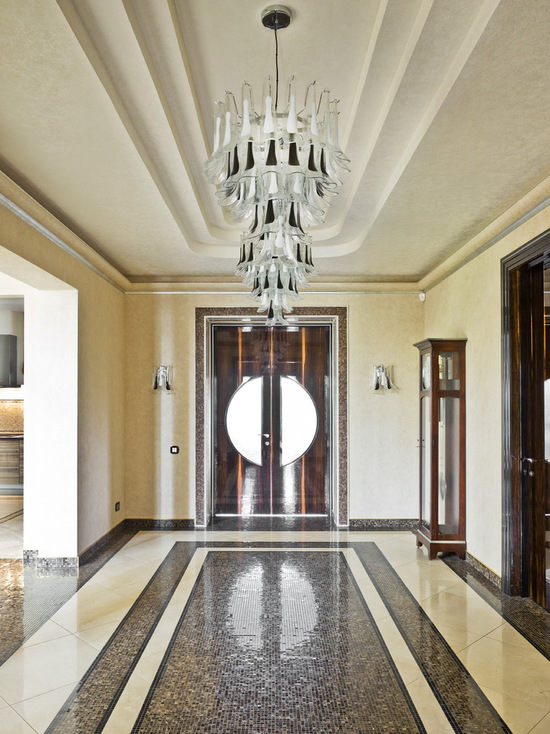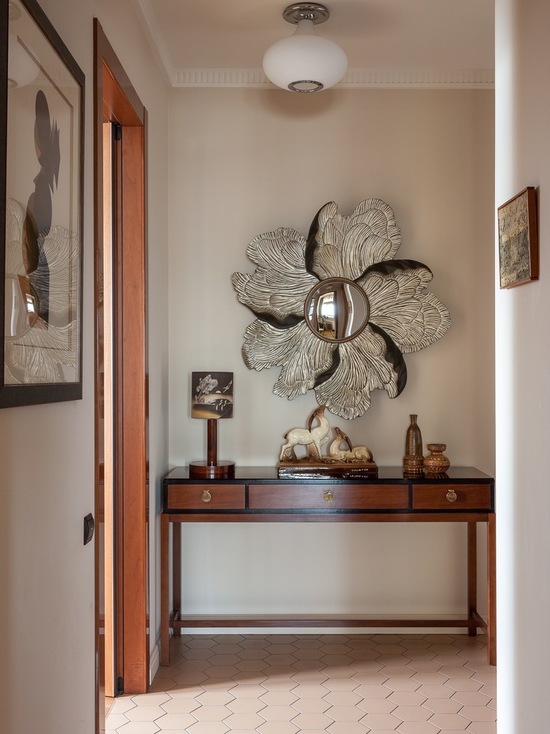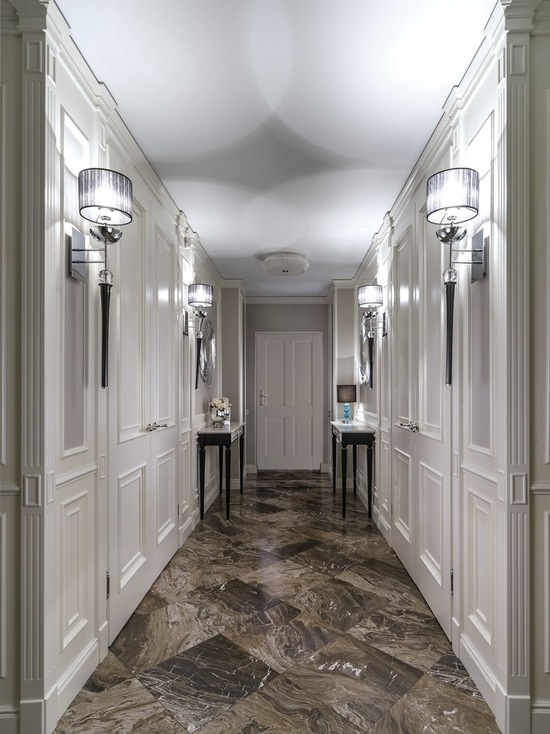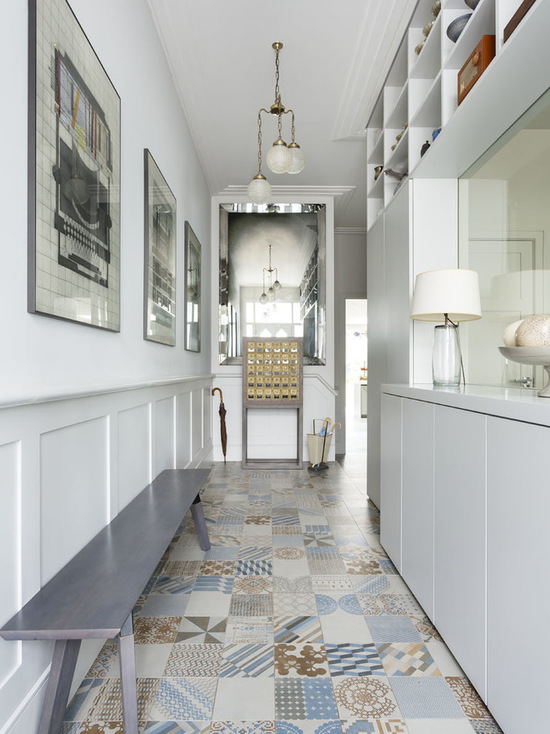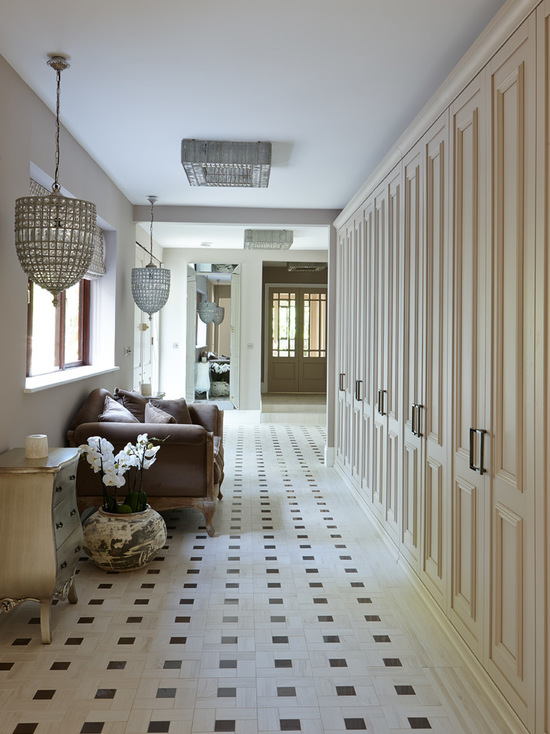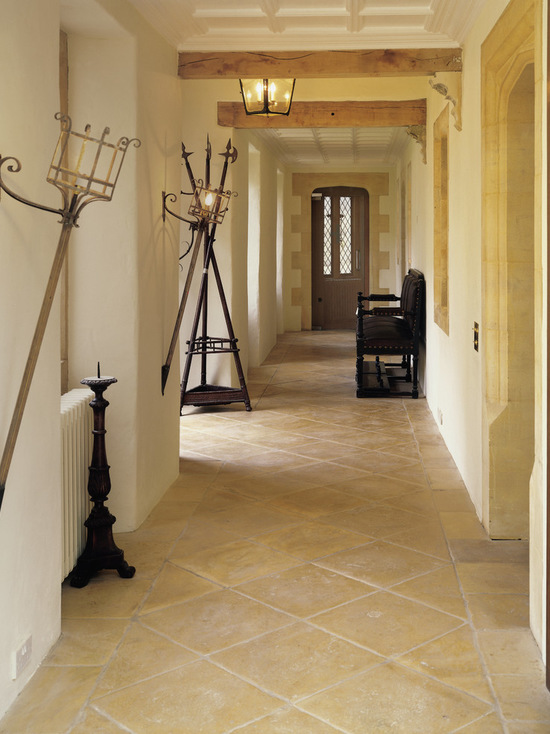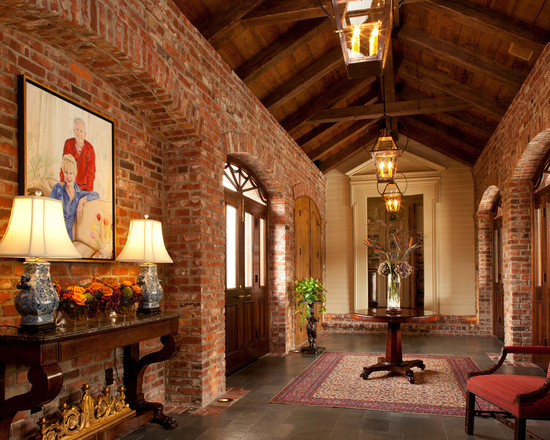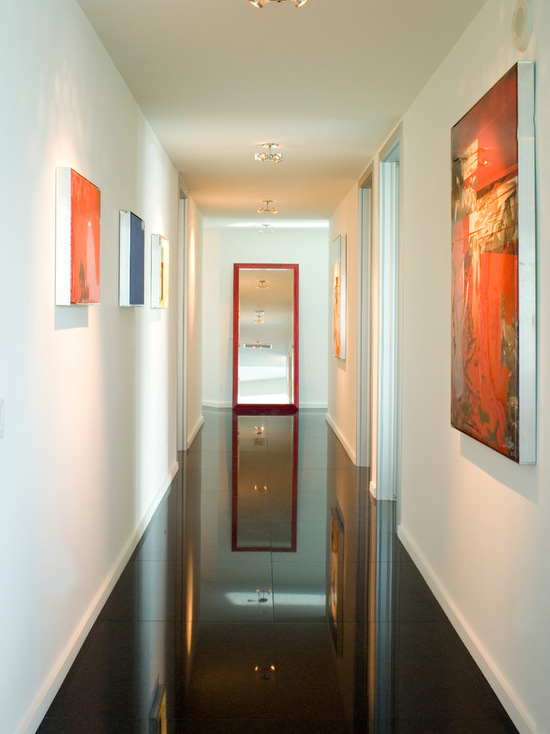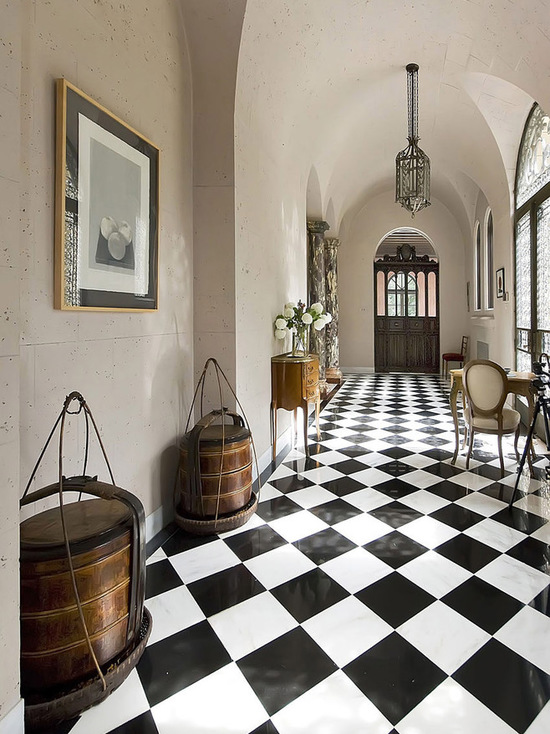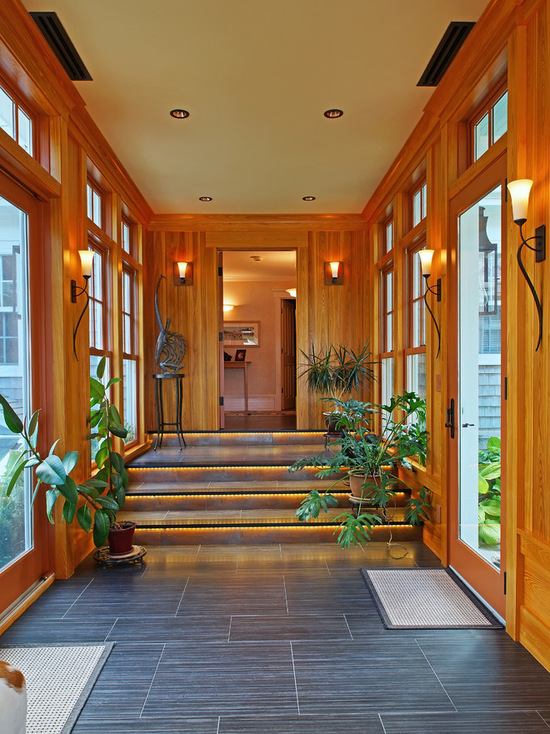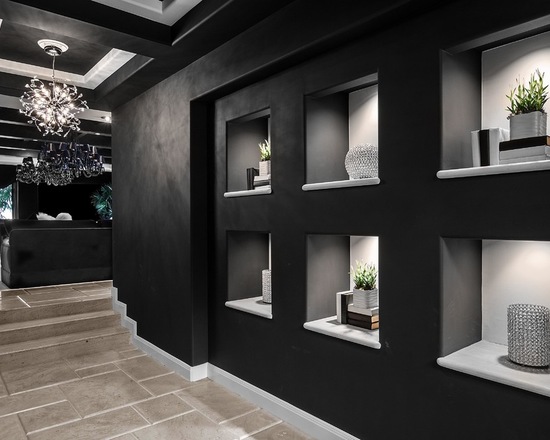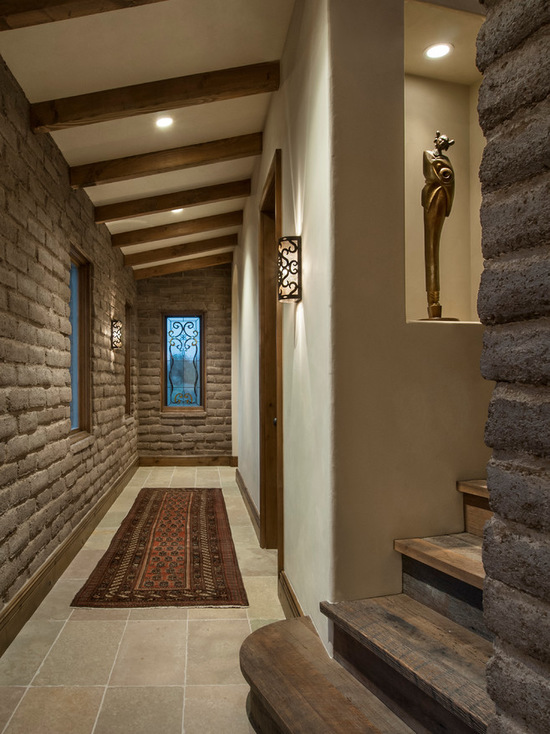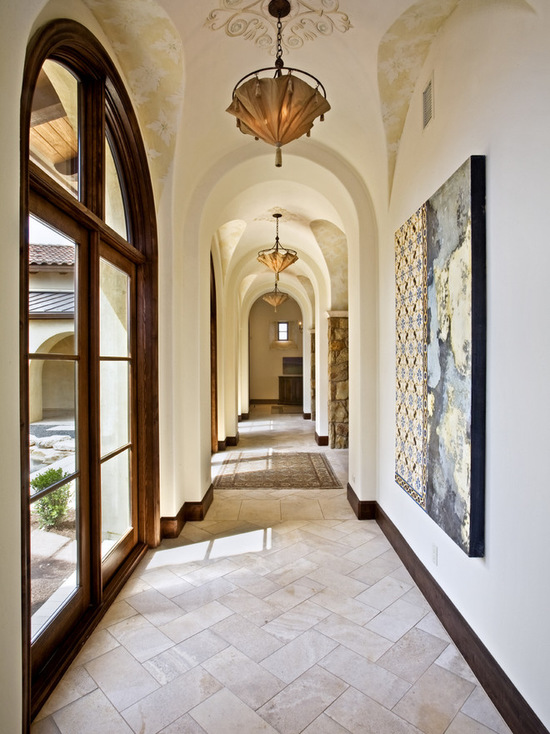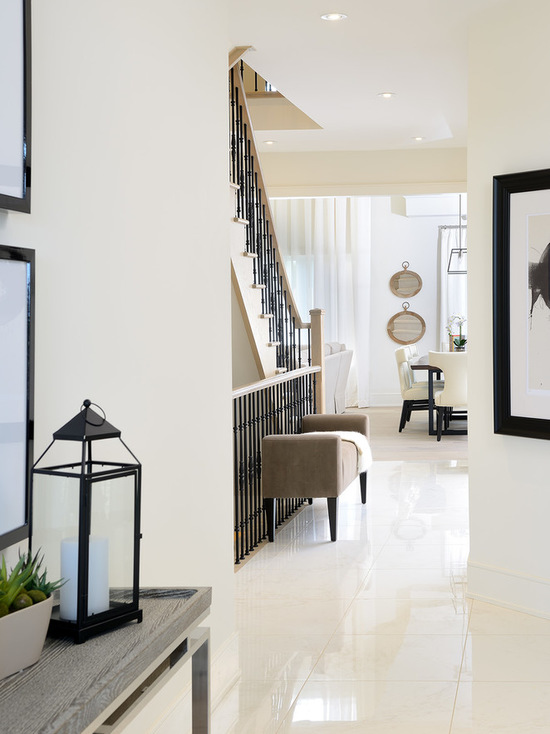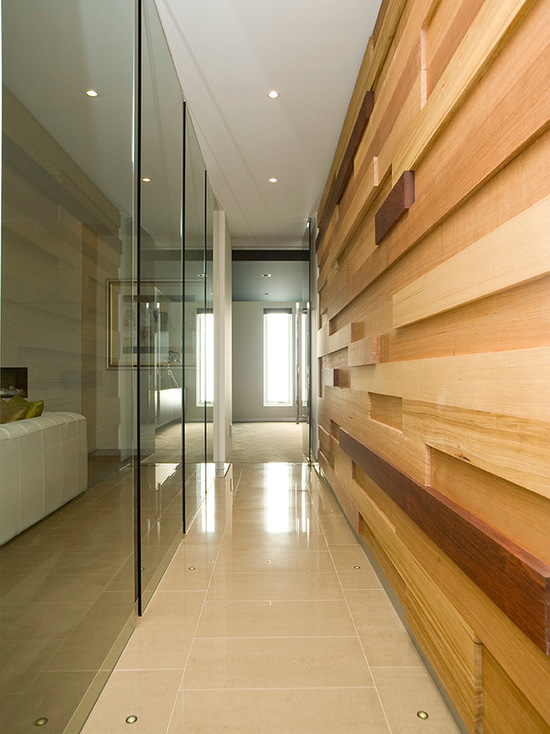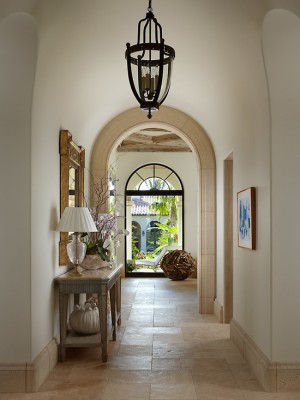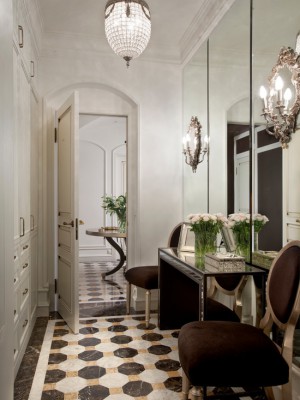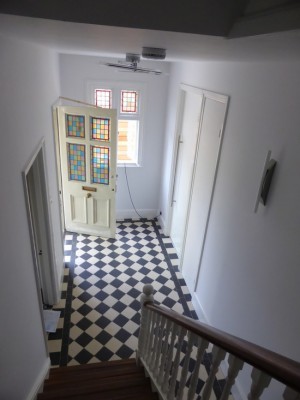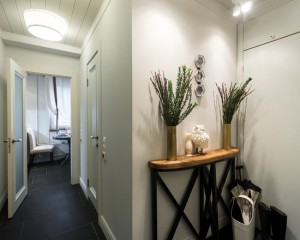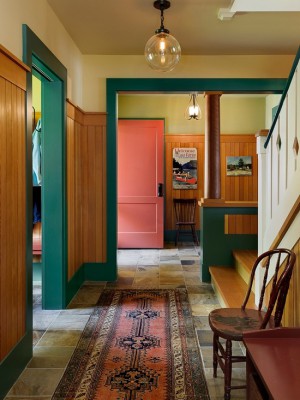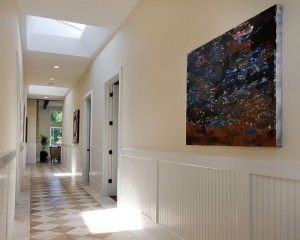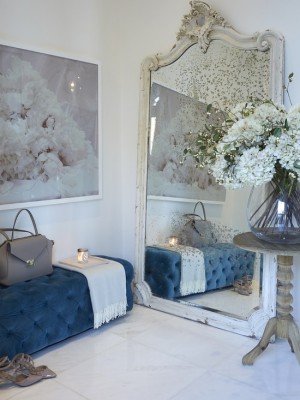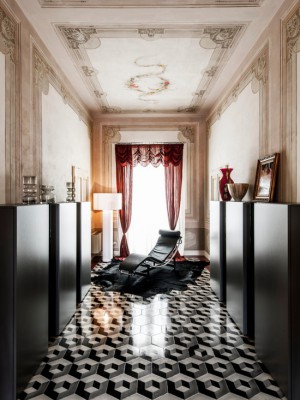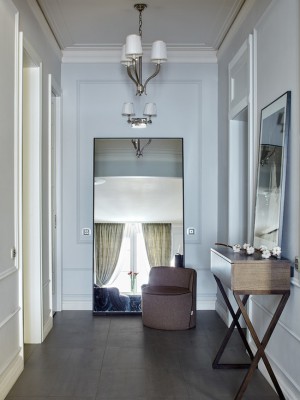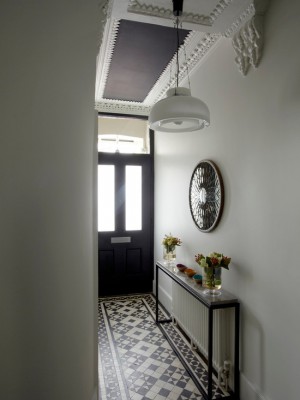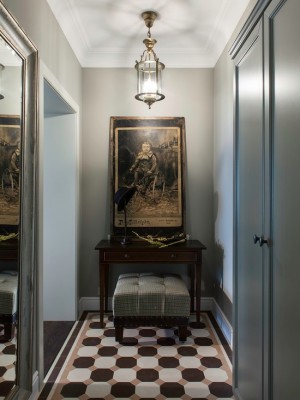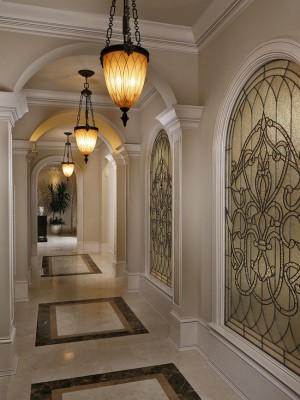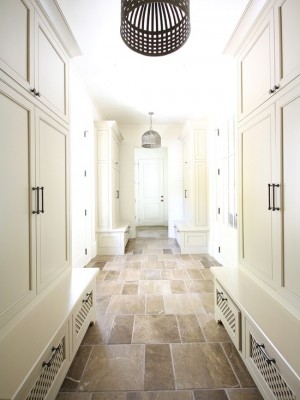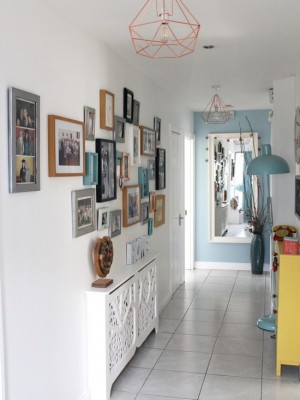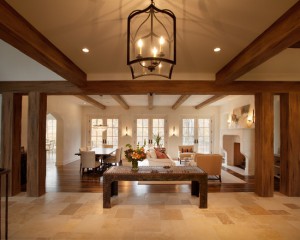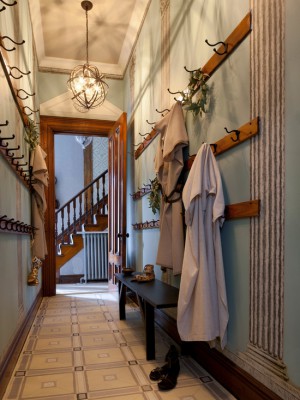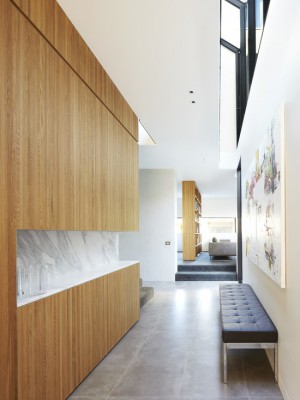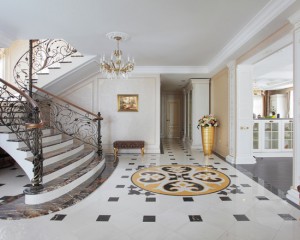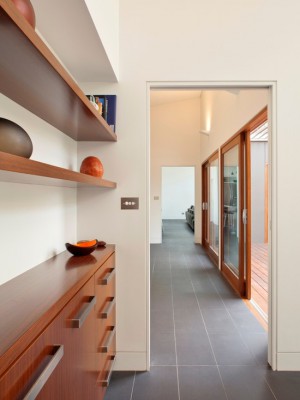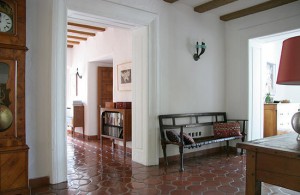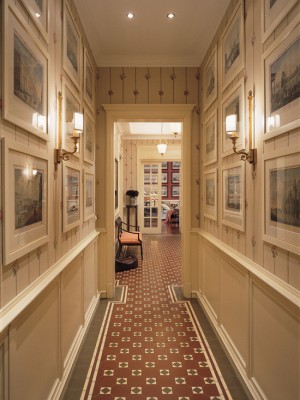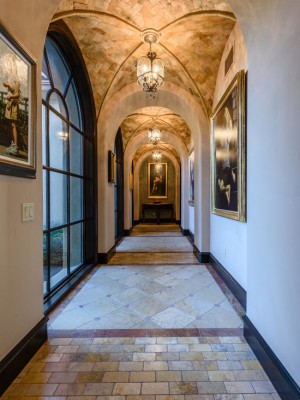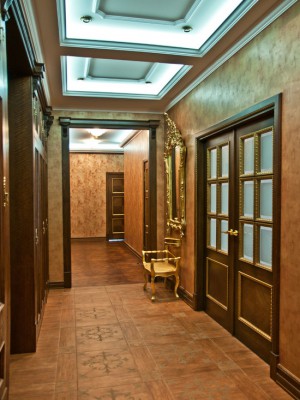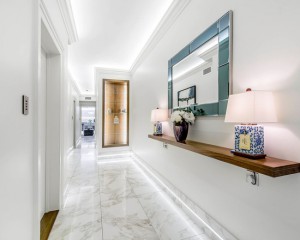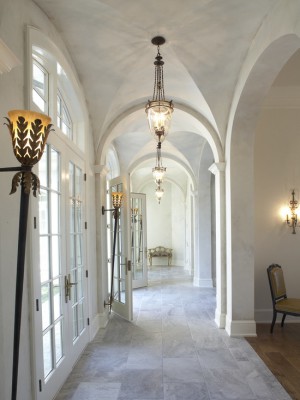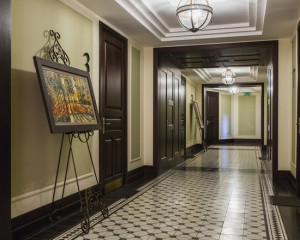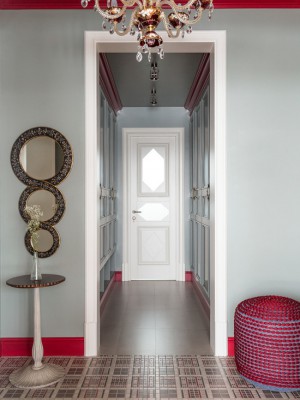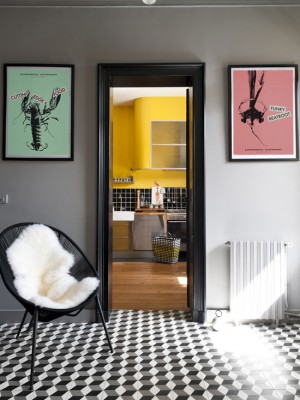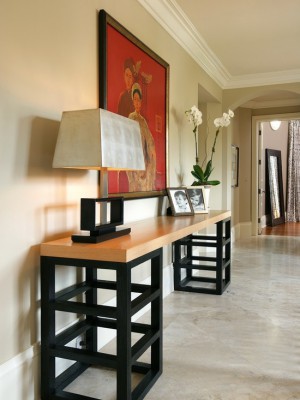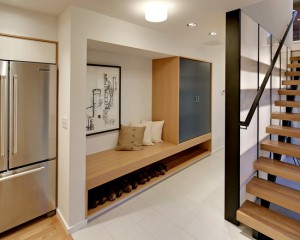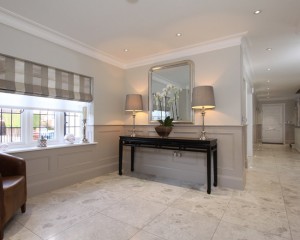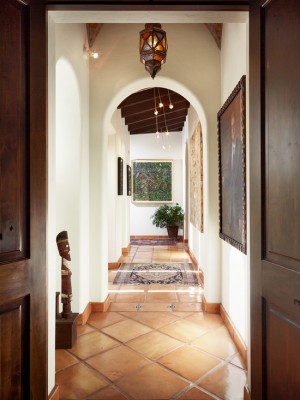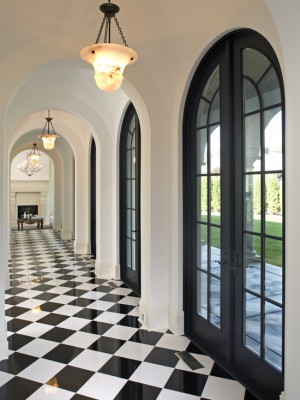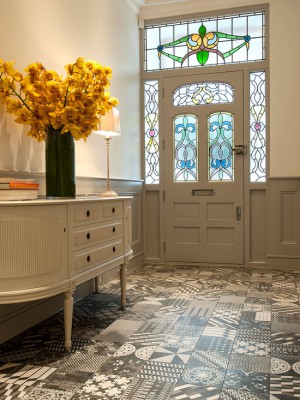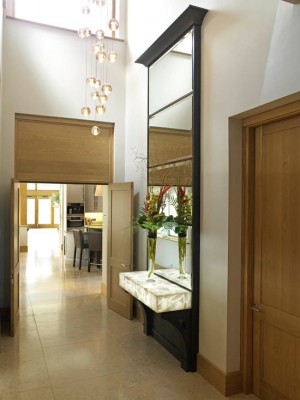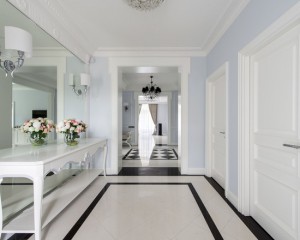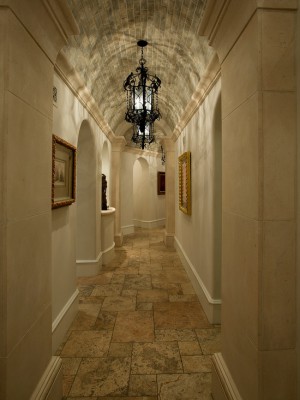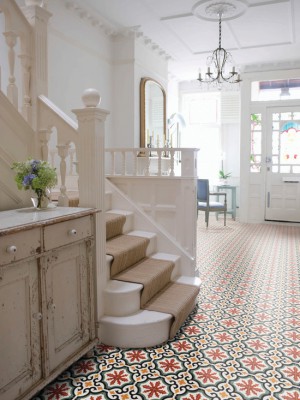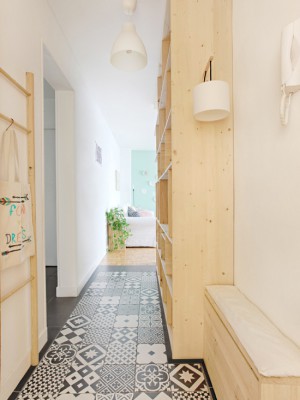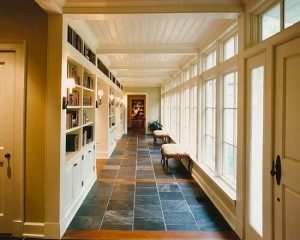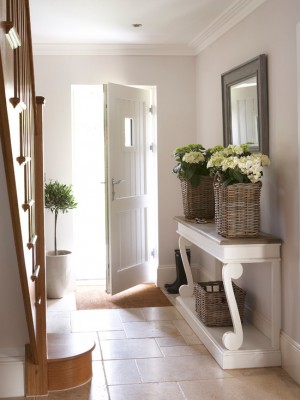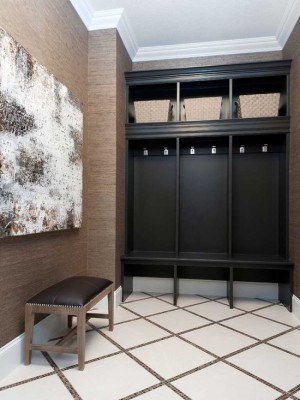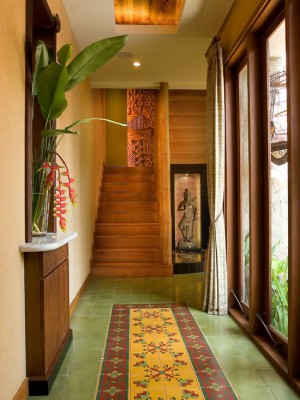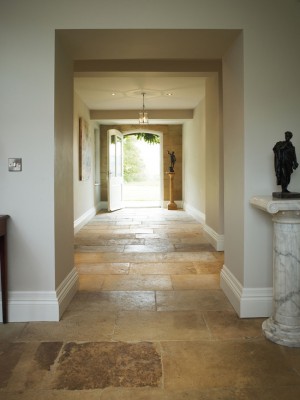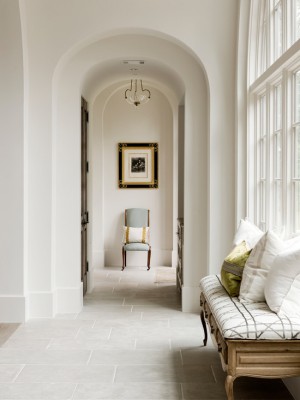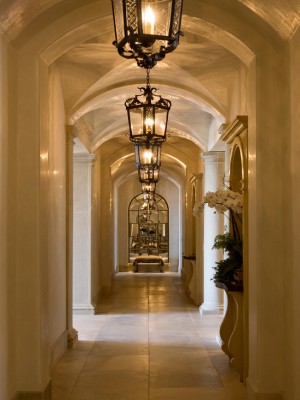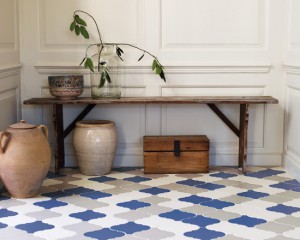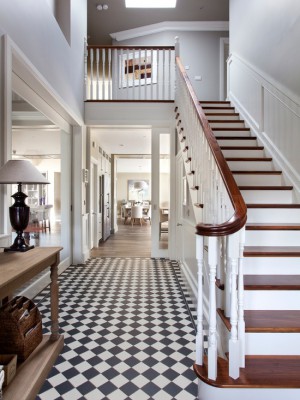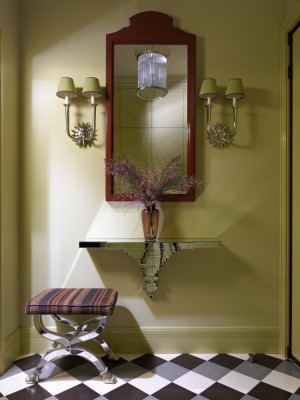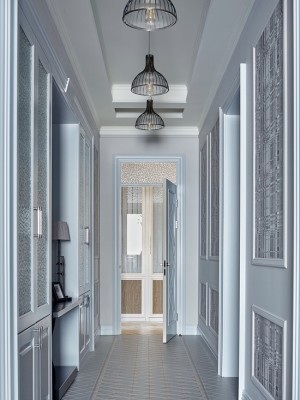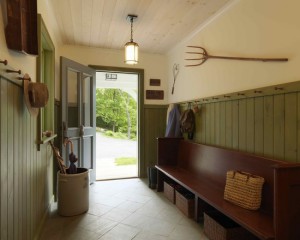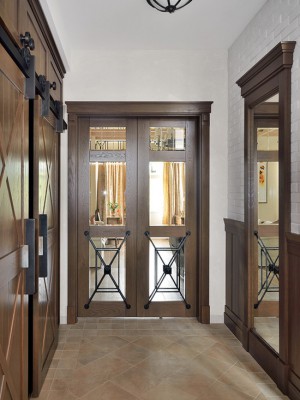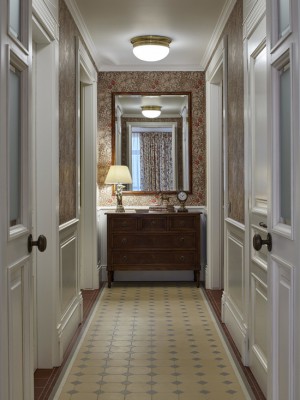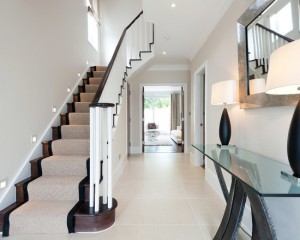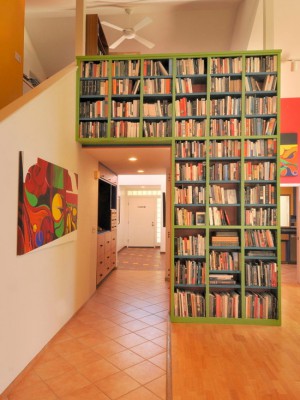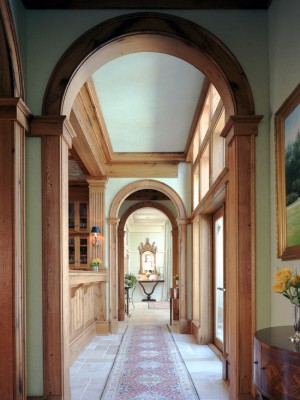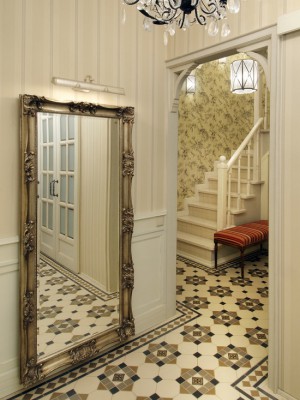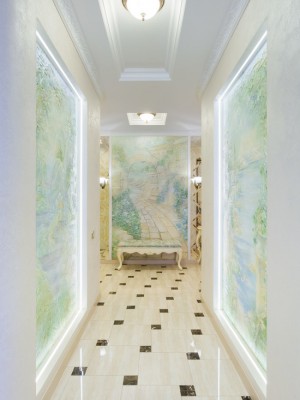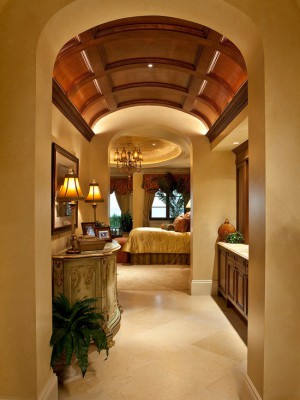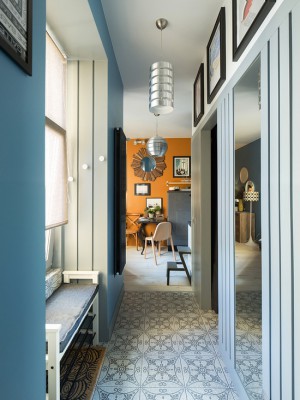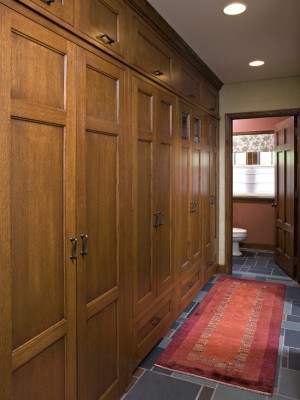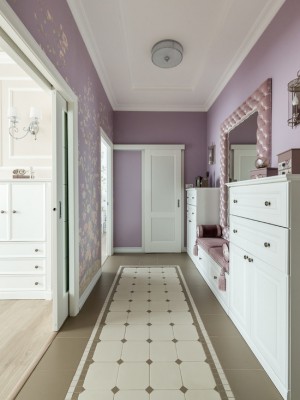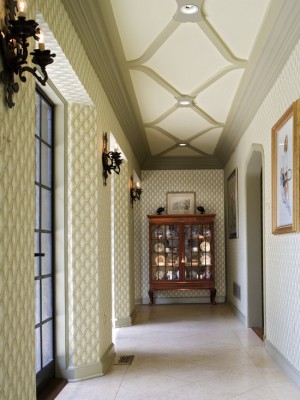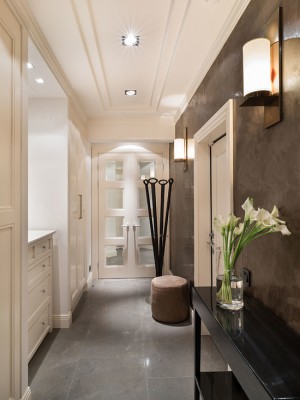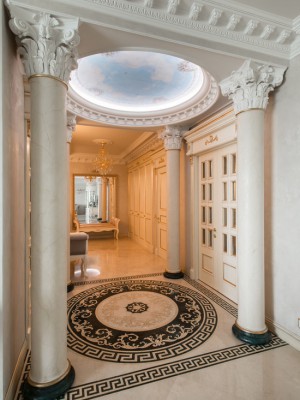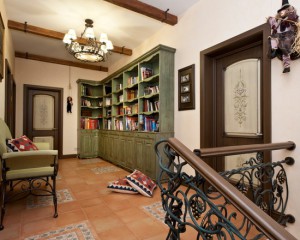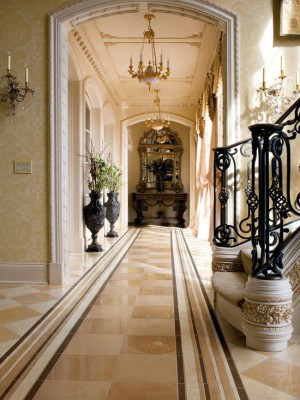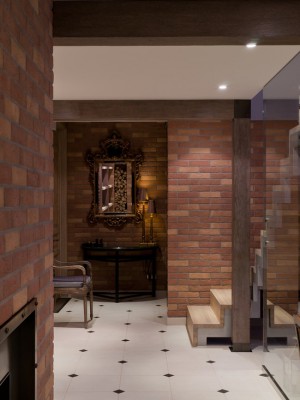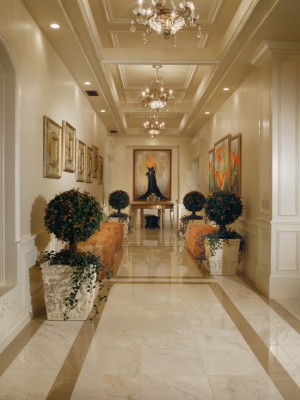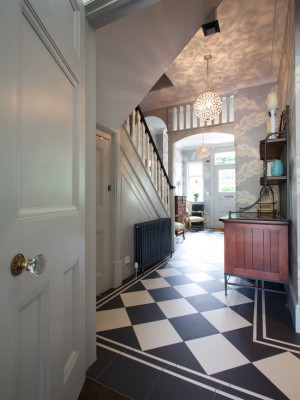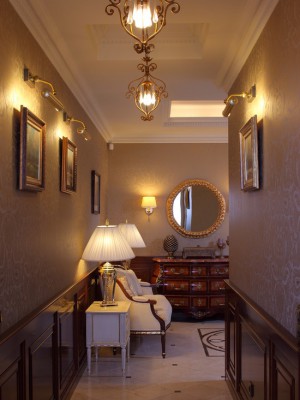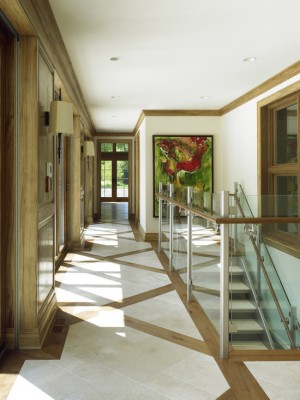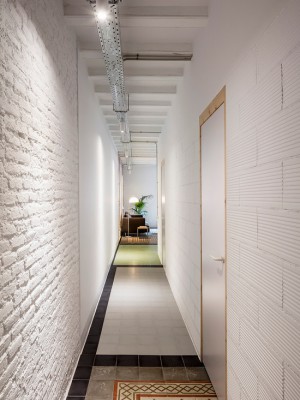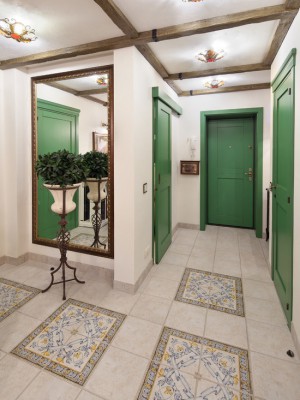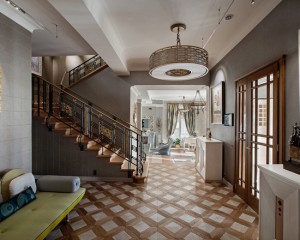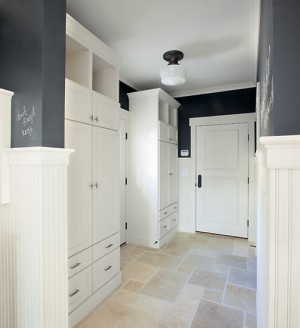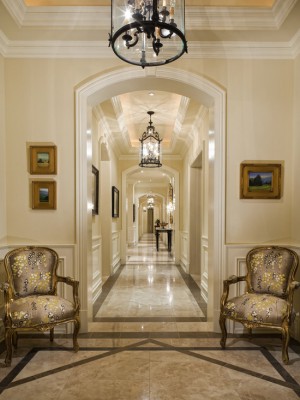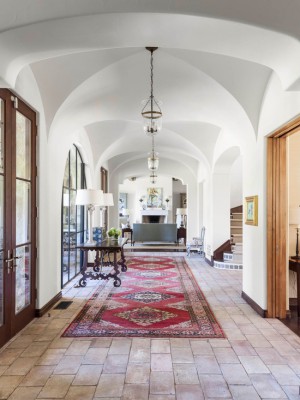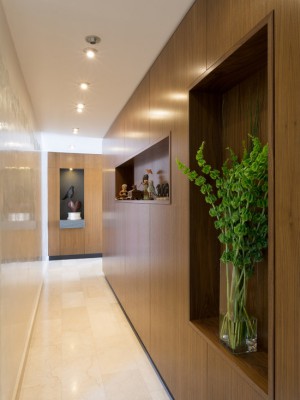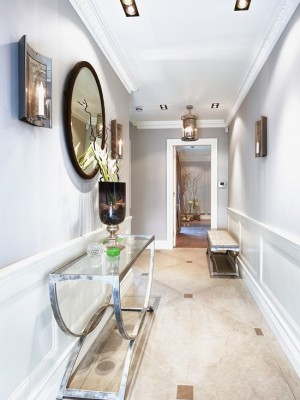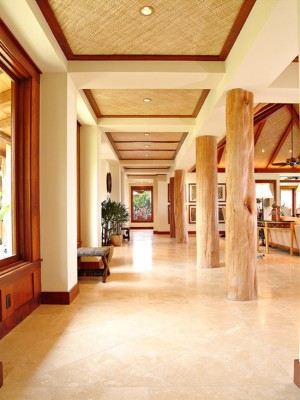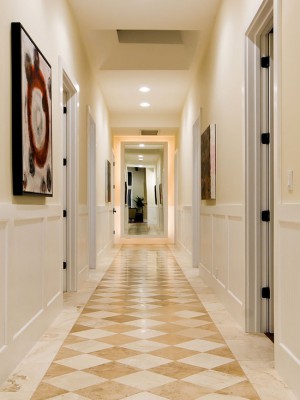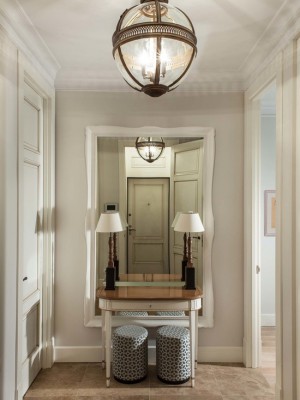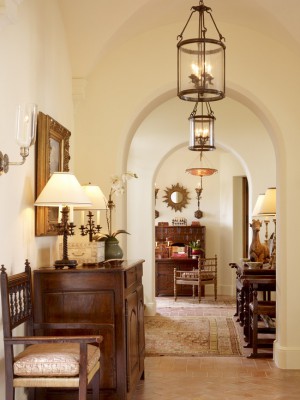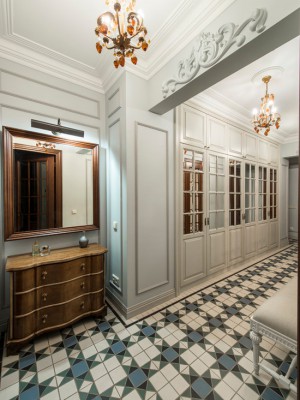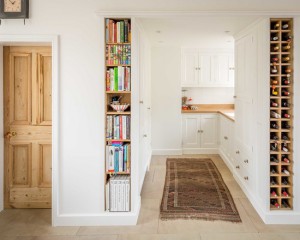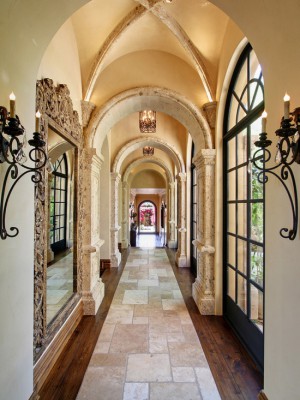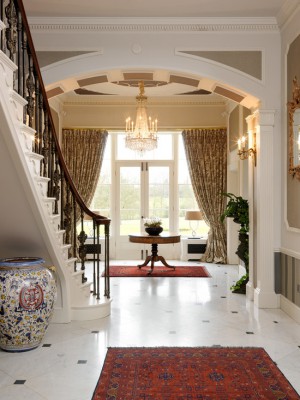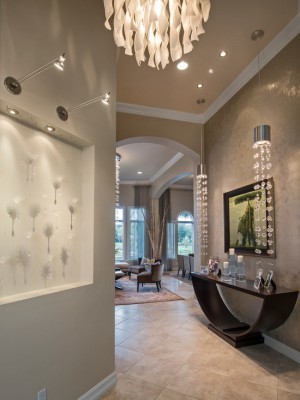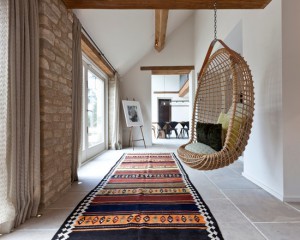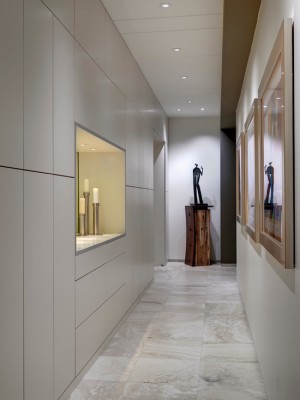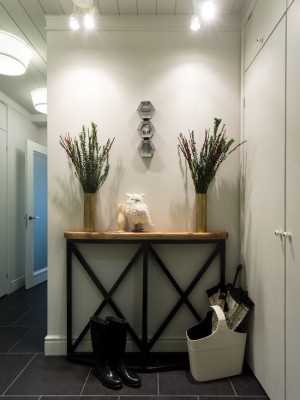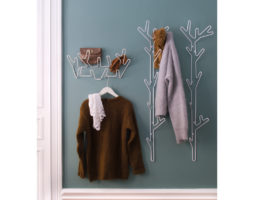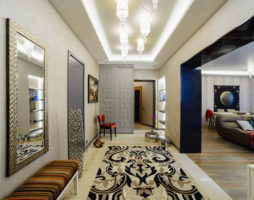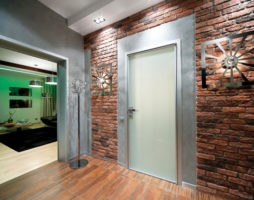Hallway floors are constantly exposed to aggressive impact. Coming from the street, we bring dirt, sand, and in winter, even the remains of reagents. Accelerates the wear of the coating and our heels. Therefore, when decorating this area of \u200b\u200byour home, it is very important to choose the right floor covering for it. The tile in the interior of the corridor will look great. It will perfectly cope with both aesthetic and functional tasks.
Gone are the days when ceramics looked faceless. The latest collections of tiles allow you to implement the most daring interior solutions in the hallways. Let's take a closer look at the modern versions of this finishing material.
Qualitative characteristics
“The tiles in the interior of the corridor will not have to be repaired or changed often, which is also important in the current crisis”
There are a lot of requirements for floor types of ceramic tiles, but the main ones remain:
- Reliability.
- Quality.
- Abrasion resistance.
Mechanical strength, high coefficient of friction, lack of sensitivity to chemical irritants - all this is inherent in the collections of ceramic tiles produced today.
Resilience and strength are interrelated parameters. Tiles with increased mechanical resistance cannot but have the same high wear resistance. Products of this quality will not break or deform under normal use. This means that the tiles in the interior of the corridor will not have to be repaired or changed often, which is also important in the current crisis.
The tile perfectly reacts to moisture, or rather does not react. This is also very good, because often people come into the hallway in wet and dirty shoes. As for the coefficient of friction, this indicator may vary.
Two types of tiles are optimal for the hallway:
- With embossed surface.
- With a smooth surface.
The latter is less desirable, as the floor can be slippery. Porcelain stoneware is the most popular among the inhabitants. The tile made from it has a whole list of advantages. It has zero water absorption and does not fade even after many years of operation, as porcelain stoneware is stained over the entire thickness. If you prefer this type of tile to the interior of the corridor, then stop at options with an anti-slip index within R10-11.
The opinion that the use of this type of finish will make the hallway cold and gloomy has a right to exist, but the last problem is quite easy to deal with.And partial finishing will help in this. Only the “working” area, located directly near the doors, can be tiled with tiles, and the rest of the space is lined with linoleum or laid out with laminate.
When deciding on a color scheme, leave priority to embossed options in dark colors. Rough and light tile surfaces will lose their attractiveness over time, because dust and dirt will accumulate in the lagoons of irregularities, no matter how you wash them. Black tiles can only decorate a spacious hallway, as it tends to narrow the space. Considering that spacious hallways are a rarity for the layout of our houses, it turns out that collections in the black palette should practically not interest us.
back to index ↑Tiles in the interior of the corridor: pros and cons
Among the flooring materials competing in popularity, tiles invariably remain the 100% leader, since none of them can compare with them in terms of quality. And indeed, few coatings can serve in the difficult operating conditions of the hallway for more than a dozen years. The same can be said about wear resistance with strength. High-quality porcelain stoneware practically does not react to sharp heels, dirt and moisture. It perfectly tolerates cleaning products, even with an abrasive effect. Floor tiles are hygienic because they are easy to clean and hypoallergenic, thanks to the quality of the raw materials and the manufacturing process.
The tile fits into any stylistic decisions of the hallway decor. The variety of its types allows designers to realize their ideas in full. There are collections that can emphasize the status of the situation or its aristocracy. In the latter case, instead of porcelain tiles in the interior of the corridor, its metlakh variety, famous for its special sophistication, may appear..
No matter how well the tile is characterized, it also has certain disadvantages in its use. For example, in a large hallway, if laid out ill-conceived, it can bring excessive officialdom. Instead of a cozy corner, the room will turn into a government lobby that welcomes us to state institutions. You can avoid this by playing on combinational moments. Tiles are combined with floor coverings of a different texture or they resort to a game of warm shades.
It is very important that the tiles in the interior of the corridor are not slippery, with a glossy glaze surface. Entering the house in wet shoes, you will be at great risk. On such a surface, nothing is worth getting injured. So look at the slip factor. Performance that satisfies you will only be on coatings with a matte and rough “face”.
It is bad if the tile is covered with too deep relief. Dirt will wonderfully accumulate and “preserve” in its “niches”. It is clear that a light coating will quickly lose its attractiveness, therefore it is more correct to lay tiles in dark colors near the door, but the main part of the floor may well be covered with tiled elements in a light solution.
As you can see, the "cons" are not catastrophic in their globality and, if desired, they can be dealt with.
back to index ↑Combination alliances
The task of tiles in the hallway is to protect the floor from destruction, because it can only be used in problem areas. Combination options for laying tiles also work for zoning, effectively highlighting the entrance part in the common space of the corridor, studio, hall, lobby.The boundary of the zone, of course, will pass along the junction of the floor coverings.
It is good if the tile contrasts with the pattern of the companion material. The combined design of the floor will deprive the monotony of the atmosphere of a too long corridor. The joints of different textured coatings will add additional curves or even lines to the decor.
If there is no need to divide the hallway into zones, then you can completely tile the floor in the interior of the corridor. The atmosphere will become much more pleasant if the material imitates the wood structure. For greater effect, you can use a black and white range of tones.
back to index ↑Ways to finish the hallway floor
A tiled area can rise like a podium or lie in the same plane with additional flooring. The height of the elevation should not exceed 5 centimeters. Having a steeper step can not only bring inconvenience, but also be unsafe. It is permissible to fill the podium with tile adhesive or a special screed mixture. A mini-podium more clearly delimits the space of the hallway. He disciplines, since it usually does not occur to cross the line of this area without taking off his shoes. So it turns out that the tiles laid in this way in the interior of the corridor involuntarily help to keep it clean.
Joints of floor coverings can have a flat or curly shape. The latter method is more attractive, but it is quite difficult to implement it. Cutting tiles is hard work. This requires calculation and caution. Such torment will be justified if smooth lines are a key interior feature. Curvilinear solutions are characteristic of the Art Nouveau style, which gravitates toward whimsical ornateness. To give the wavy joint a complete look, a flexible docking threshold will help, which easily takes the desired shape. The joint threshold can repeat the tile shade, match the color of the second coating or be in harmony with:
- Furniture.
- plinth.
- door.
- Metal fittings.
Floor tiles: patterns, colors, shapes
“If you plan to use patterned tiles in the interior of the corridor, then the pattern must be synchronized with the wallpaper print, furniture decor, ceiling”
It is necessary to use tiles in the interior of the corridor wisely. Look at his layout. If this is a long and narrow space, then dark colors do not belong here. The hallway runs the risk of becoming cold and uncomfortable. But light tiles, echoing the palette of wall decoration, will be just right. Such a move, by the way, is also beneficial in terms of illusion, as it will expand the spatial volumes. There is another design trick that allows you to adjust the boundaries of a small space - the alternation of narrow tiles in contrasting colors.
In a spacious hall, there are no restrictions on texture, color scheme and tile configuration. You can add additional accents to the situation in any way. Perfectly perceived in the center of the spacious space of the hallway is a tiled panel framed by a finely elemental mosaic. If you plan to use patterned tiles in the interior of the corridor, then the pattern must be synchronized with the wallpaper print, furniture decor, ceiling. It should resonate with the general stylistic aspects of the design.
The hall, interpreted in the classical version, will require splendor and richness in everything, so it is better to lay tiles on the floor, if not natural marble, then good imitation of it, with characteristic stains and color matching.
Oriental interior will be satisfied with metlakh tiles.In a minimalist modernity, it is worth turning to bright solutions. Contrasting tiles are often laid here according to the principle of a chessboard.
back to index ↑Some helpful tiling ideas
If you have to tile a spacious area in the interior of the corridor, you should think about some frills, in the form of a variety of tile shapes or a color spectrum. An ornament laid out in the center or even a whole picture, which can be framed with a mosaic or a mix of two types of tiles, will help to deprive the interior of monotony. It will turn out original and aesthetically pleasing.
Try to combine coatings not by joining them in a straight line, but by “breaking” the rigidity of the spatial frames, that is, by zigzags, waves, etc. Such a move is 100% justified when the standard geometric forms of decor are disgusted by those living in the house. Rough lines will easily add personality to the setting.
If you want to correct the spatial perception of a small hallway, you can play with colors and ways of laying tiles. Alternating multi-colored tile stripes, unusual ways of laying elements, which ultimately give rise to original patterns, will be good.
Conclusion
Tiles in the interior of the corridor are a great opportunity to make the space stylish and modern, and it will remain so for many years, because this material is unique in its endurance and durability.
back to index ↑Photo gallery - tiles in the interior of the corridor:
